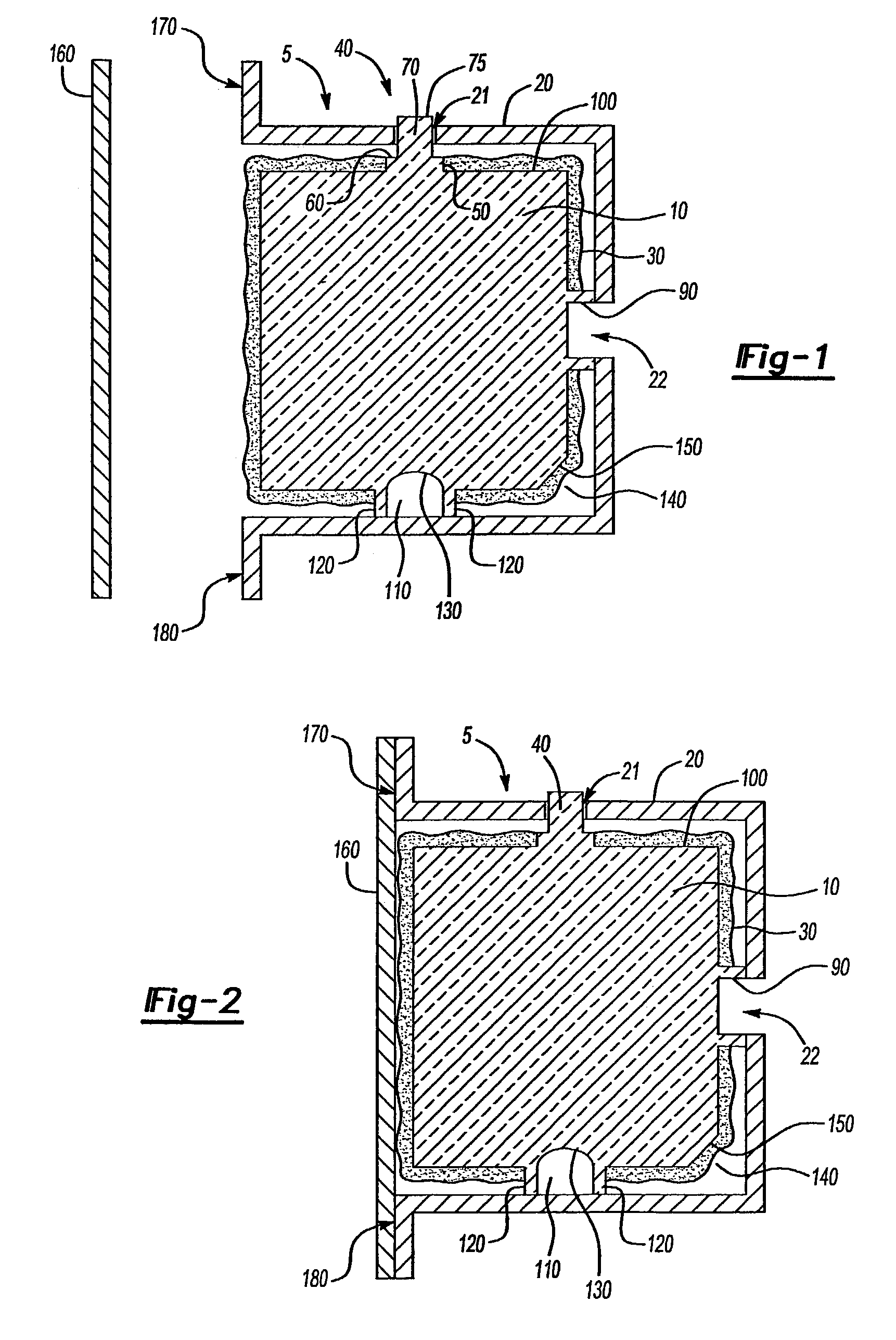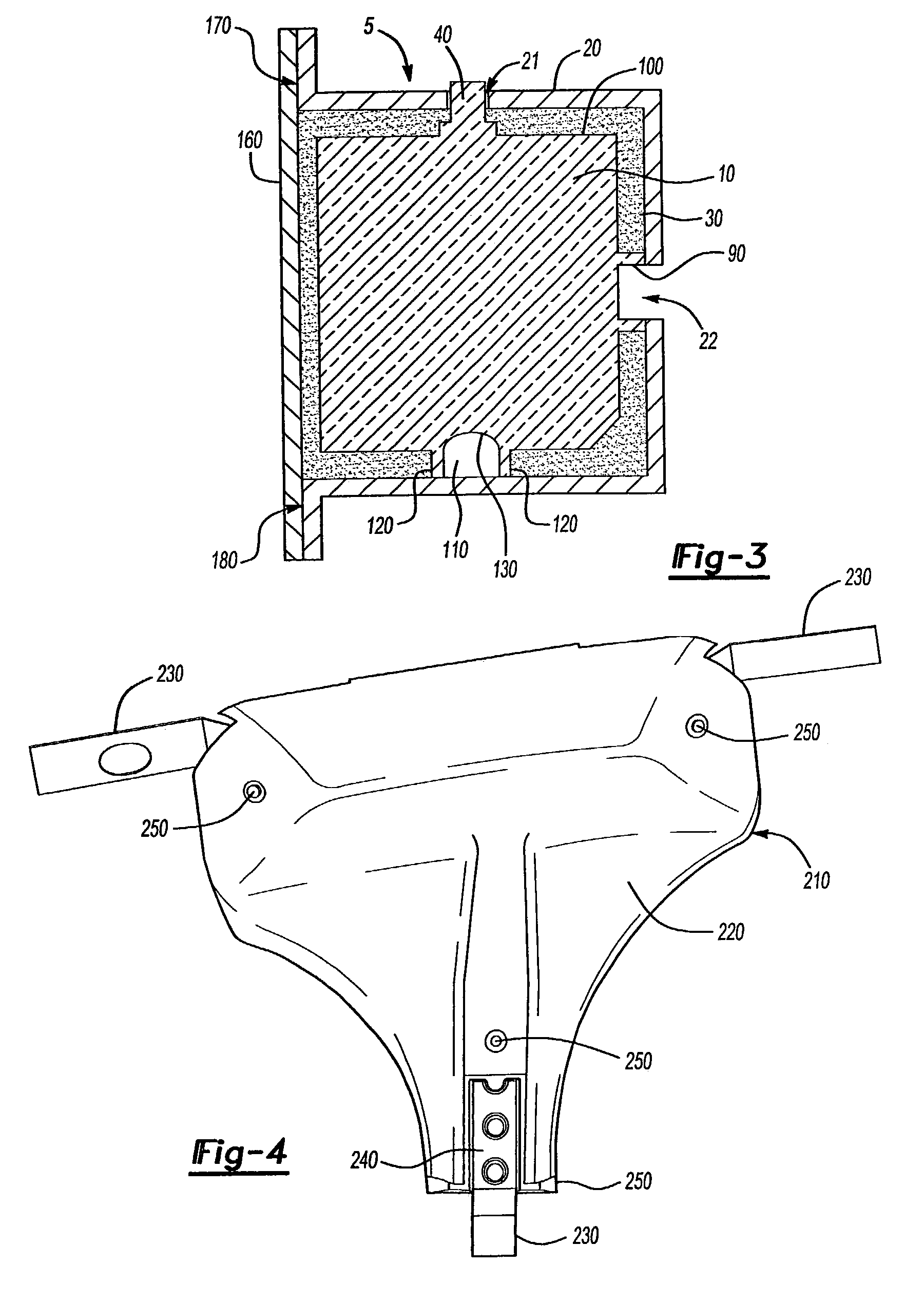Vehicular structural members and method of making the members
a technology of structural members and vehicles, applied in the field of light weight inserts, can solve the problems of rigidity of structural members, unpredictability and variability of crash worthiness of one automobile to another, and have not been used for improving, so as to achieve the effect of easy identification and easy insertion
- Summary
- Abstract
- Description
- Claims
- Application Information
AI Technical Summary
Benefits of technology
Problems solved by technology
Method used
Image
Examples
Embodiment Construction
[0021]Hollow member as used herein means an empty cavity formed by the parts of the apparatus, such as an automobile, which cavity is typically enclosed. The apparatus may exhibit structural weakness at the point of the location of the hollow member. At least a portion with respect to the location of the adhesive on the shaped foam article means that the shaped foam article has adhesive on some or all of its outer surface. Integral locating means is a means for locating and holding the shaped part in the location it is meant to be placed wherein the locating means is integrated into the shaped part. The integral locating means can be a shaped indentation or protrusion made from the foam used to form the shaped part. Alternatively, the integral locating means is made of another material wherein a portion of the locating means is molded into the shaped foam part or permanently affixed post molding so as to permanently lock the integral locating means in place. The integral locating me...
PUM
| Property | Measurement | Unit |
|---|---|---|
| density | aaaaa | aaaaa |
| density | aaaaa | aaaaa |
| temperature | aaaaa | aaaaa |
Abstract
Description
Claims
Application Information
 Login to View More
Login to View More - R&D
- Intellectual Property
- Life Sciences
- Materials
- Tech Scout
- Unparalleled Data Quality
- Higher Quality Content
- 60% Fewer Hallucinations
Browse by: Latest US Patents, China's latest patents, Technical Efficacy Thesaurus, Application Domain, Technology Topic, Popular Technical Reports.
© 2025 PatSnap. All rights reserved.Legal|Privacy policy|Modern Slavery Act Transparency Statement|Sitemap|About US| Contact US: help@patsnap.com



